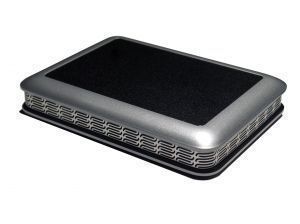External Hard Drives
An external hard drive is any hard drive which attaches to a port on the outside of a computer case.
External hard drives are extremely useful for backing up computers and for moving data between computers.
External Hard Drive Interfaces
External hard drives can be connected using several popular interfaces. One external hard drive may support two or more of these interfaces.
FireWire
FireWire, almost known as IEEE 1394, is a popular interface for Macintosh external hard drives, and became somewhat popular on PC’s before USB 2.0 was standardized.
USB
USB (Universal Serial Bus) is a standard for connecting a wide range of devices, including external hard drives, PDA’s, and Sony PlayStations.
USB 1.x was not fast enough to satisfy most users of external hard drives. USB 2.0 provides slightly better performance than FireWire in most applications.
eSATA
eSATA is the newest standard for external hard drives.
eSATA is an extension of the Serial ATA standard which allows the use of external hard drives.
An external hard drive using an eSATA connection will not suffer a performance penalty imposed by encapsulating the ATA data inside the USB or FireWire protocols, because the eSATA external hard drive uses the same communications protocol as the internal hard drives.
Ethernet
A few external hard drives offer Ethernet connections.
These drives include intelligent electronics to enable them to act like file servers.
These external hard drives are actually low-end network attached storage devices.


Comments - 2 Responses to “External Hard Drives”
Sorry but comments are closed at this time.